Sulfamonomethoxine
Synonym(s):N1-(6-Methoxy-4-pyrimidinyl)sulfanilamide;4-Amino-N-(6-methoxy-4-pyrimidinyl)benzenesulfonamide;4-Methoxy-6-sulfanilamidopyrimidine;SMM
- CAS NO.:1220-83-3
- Empirical Formula: C11H12N4O3S
- Molecular Weight: 280.3
- MDL number: MFCD00063466
- EINECS: 624-483-8
- SAFETY DATA SHEET (SDS)
- Update Date: 2024-12-18 14:15:32
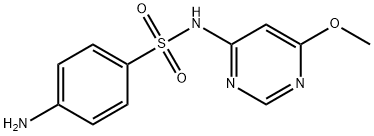
What is Sulfamonomethoxine?
Chemical properties
White To Off-White Crystalline Powder
The Uses of Sulfamonomethoxine
Protein binding. Inhibitor of enzyme. Sulfamonomethoxine and Trimethoprim
The Uses of Sulfamonomethoxine
antibacterial
The Uses of Sulfamonomethoxine
Protein binding. Inhibitor of enzyme. Sulfamonomethoxine and Trimethoprim are used for treating porcine unknown hyperpyrexia.
What are the applications of Application
Sulfamonomethoxine is an enzyme inhibitor used to address hyperpyrexia
Definition
ChEBI: Sulfamonomethoxine is a sulfonamide and a member of benzenes.
Synthesis Reference(s)
The Journal of Organic Chemistry, 26, p. 2764, 1961 DOI: 10.1021/jo01066a034
General Description
Chemical structure: sulfonamide
Biochem/physiol Actions
Sulfamonomethoxine is a competitive inhibitor of dihydropteroate synthetase used to block the synthesis of folic acid.
Properties of Sulfamonomethoxine
| Melting point: | 203-2060C |
| Boiling point: | 513℃ |
| Density | 1.3936 (rough estimate) |
| refractive index | 1.6200 (estimate) |
| Flash point: | >110°(230°F) |
| storage temp. | Keep in dark place,Inert atmosphere,2-8°C |
| solubility | methanol: soluble10mg/mL |
| form | powder |
| pka | pKa 5.94 (Uncertain) |
| color | white to white with yellow cast |
| Water Solubility | Soluble in water at 10mg/ml with warming. Also soluble in ethanol or methanol |
| BRN | 621128 |
| InChI | InChI=1S/C11H12N4O3S/c1-18-11-6-10(13-7-14-11)15-19(16,17)9-4-2-8(12)3-5-9/h2-7H,12H2,1H3,(H,13,14,15) |
| CAS DataBase Reference | 1220-83-3(CAS DataBase Reference) |
| EPA Substance Registry System | Sulfamonomethoxine (1220-83-3) |
Safety information for Sulfamonomethoxine
| Signal word | Warning |
| Pictogram(s) |
 Exclamation Mark Irritant GHS07 |
| GHS Hazard Statements |
H315:Skin corrosion/irritation H317:Sensitisation, Skin H319:Serious eye damage/eye irritation H335:Specific target organ toxicity, single exposure;Respiratory tract irritation |
| Precautionary Statement Codes |
P280:Wear protective gloves/protective clothing/eye protection/face protection. P302+P352:IF ON SKIN: wash with plenty of soap and water. P305+P351+P338:IF IN EYES: Rinse cautiously with water for several minutes. Remove contact lenses, if present and easy to do. Continuerinsing. |
Computed Descriptors for Sulfamonomethoxine
| InChIKey | WMPXPUYPYQKQCX-UHFFFAOYSA-N |
| SMILES | C1(S(NC2C=C(OC)N=CN=2)(=O)=O)=CC=C(N)C=C1 |
New Products
(S)-3-Aminobutanenitrile hydrochloride 4-Methylphenylacetic acid N-Boc-D-alaninol N-BOC-D/L-ALANINOL Tert-butyl bis(2-chloroethyl)carbamate 3-Morpholino-1-(4-nitrophenyl)-5,6-dihydropyridin- 2(1H)-one Furan-2,5-Dicarboxylic Acid Tropic acid 1-Bromo-3,5-Di-Tert-Butylbenzene S-2-CHLORO PROPIONIC ACID ETHYL ISOCYANOACETATE 2-Bromo-1,3-Bis(Dimethylamino)Trimethinium Hexafluorophosphate 4-IODO BENZOIC ACID 3-NITRO-2-METHYL ANILINE 1-(2,4-DICHLOROPHENYL) ETHANAMINE (2-Hydroxyphenyl)acetonitrile 4-Bromopyrazole 2-(Cyanocyclohexyl)acetic acid 4-methoxy-3,5-dinitropyridine 1-(4-(aminomethyl)benzyl)urea hydrochloride 2-aminopropyl benzoate hydrochloride diethyl 2-(2-((tertbutoxycarbonyl)amino) ethyl)malonate tert-butyl 4- (ureidomethyl)benzylcarbamate Ethyl-2-chloro((4-methoxyphenyl)hydrazono)acetateRelated products of tetrahydrofuran

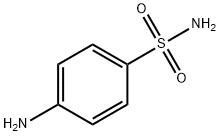
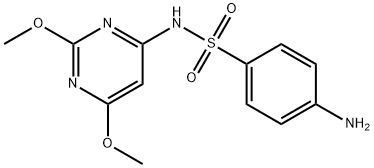


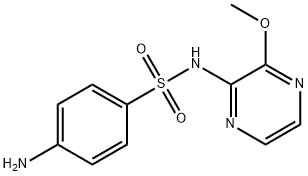
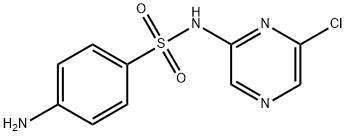
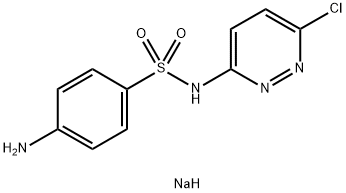
You may like
-
 Sulfamonomethoxine CAS 1220-83-3View Details
Sulfamonomethoxine CAS 1220-83-3View Details
1220-83-3 -
 Sulfamonomethoxine CAS 1220-83-3View Details
Sulfamonomethoxine CAS 1220-83-3View Details
1220-83-3 -
 1975-50-4 98%View Details
1975-50-4 98%View Details
1975-50-4 -
 2-HYDROXY BENZYL ALCOHOL 98%View Details
2-HYDROXY BENZYL ALCOHOL 98%View Details
90-01-7 -
 2-Chloro-1,3-Bis(Dimethylamino)Trimethinium Hexafluorophosphate 221615-75-4 98%View Details
2-Chloro-1,3-Bis(Dimethylamino)Trimethinium Hexafluorophosphate 221615-75-4 98%View Details
221615-75-4 -
 61397-56-6 CIS BROMO BENZOATE 98%View Details
61397-56-6 CIS BROMO BENZOATE 98%View Details
61397-56-6 -
 14714-50-2 (2-Hydroxyphenyl)acetonitrile 98+View Details
14714-50-2 (2-Hydroxyphenyl)acetonitrile 98+View Details
14714-50-2 -
 118753-70-1 98+View Details
118753-70-1 98+View Details
118753-70-1
Statement: All products displayed on this website are only used for non medical purposes such as industrial applications or scientific research, and cannot be used for clinical diagnosis or treatment of humans or animals. They are not medicinal or edible.